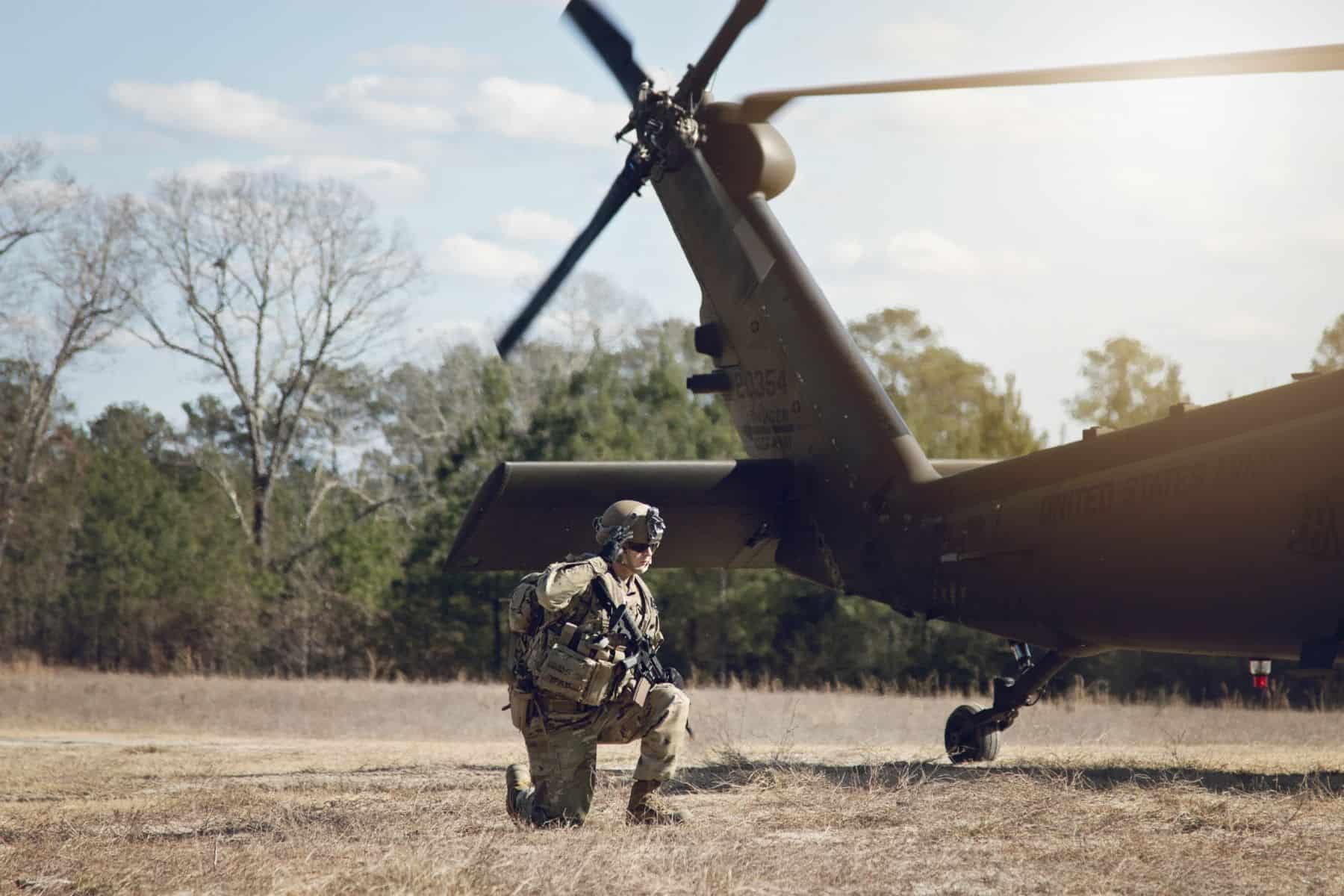Assignments to units within the United States Army Forces Command are synonymous with rotations at the Joint Readiness Training Center at Fort Polk, Louisiana.
FORSCOM’s newest unit, the 1st Security Force Assistance Brigade, headquartered at Fort Benning, Georgia, is completing their first rotation at JRTC throughout the month of January.
The self-proclaimed “world premier crucible training center” situated in the heart of the Bayou State, has hosted countless rotations for maneuver units throughout the United States Army. The training scenarios evolve to meet the Department of Defense’s changing priorities and threats on the battlefield.
Since 9/11, the fictional storylines have stayed relatively consistent — counterinsurgency measures and near-peer decisive action rotations geared toward brigade combat teams and their support elements.
However, with the Army Chief of Staff Gen. Mark A. Milley’s initiative to create Security Force Assistance Brigades — units specially trained and built to enable combatant commanders to accomplish theater security objectives by training, advising, assisting, accompanying and enabling allied and partnered indigenous security forces — the JRTC operations group had to go back to the drawing board.
“The scenario used during rotation 18-03 was like no other scenario we have ever done here at JRTC,” said Lt. Col. J.D. Pritchett, chief of plans and exercise maneuver control for JRTC’s operations group. “Typically, BCTs come through JRTC and execute a decisive action training exercise centered around a joint forcible entry, a defensive phase, an offensive phase, as well as a brigade live fire phase.”
For this novel rotation, the 1st SFAB Soldiers are tasked with working shoulder to shoulder, or the Afghan expression of ‘Shohna ba Shohna’, with Afghan National Army role players. While most scenarios are one consistent, continual conflict, this rotation has been broken down into several events catered to polishing the 1st SFAB Soldiers on combat advising and enabling partner host nations.
“We combined several different training objectives and synchronized them into a 20-day operation,” said Pritchett. “We first started with a Security Force Assistance Academy which executed classes on Afghan culture, language training, and negotiations and consequence management.”
Although the formations of SFABs are a new concept, their mission set is not — for the past decade, brigade combat teams have carried out the combat advise and assist operation. The SFABs were created in part to lessen the advise and assist load for BCTs in order to allow them to focus on conventional warfighting functions.
This created an interesting dynamic for JRTC’s operational cell.
“Seeing that the 1st SFAB is a new unit with new leadership and a unique mission, we had to go outside of the confines of JRTC to help build the rotational template,” said Pritchett. “We executed multiple conference calls with the leaders around the world. We also discussed potential training objectives with the 1st SFAB’s higher command as well as the 1st SFAB themselves. We then took those training objectives and designed the rotation, attempting to synchronize all those objectives into a single rotation, giving the 1st SFAB a baseline knowledge on multiple fronts.”
Most rotational training units are enthralled in a 10-day, arduous fight against the illusive “Geronimo” — the fictitious adversary combatant in many of the scenarios.
However, the SFAB’s intent is to view indigenous forces as allies and not as antagonists — a vastly different shift than the JRTC rotations that have come before them.
“It’s against everything we’re trained to do — to stand back and watch somebody else do it,” said Lt. Col. Jon Chavous, operations group officer JRTC. “But that’s good because they [SFAB Soldiers] are doing exactly what they are supposed to here in terms of enabling, advising and coaching.”
Although the 1st SFAB’s rotation at JRTC is unique, their end-game is not — to certify the unit prior to an upcoming deployment to Afghanistan slated for spring of 2018.
This rotation will act as a litmus test for the subsequent SFAB rotations to come. The Department of the Army has authorized the fielding of five more security force assistance brigades.
“We will take the feedback the leaders in our Army give us, to include the 1st SFAB, and work on making the next one even better,” said Pritchett. “A lot of things will change over the next few months, and we will take those lessons learned and incorporate them into the next iteration.”










